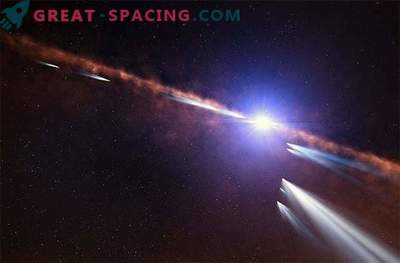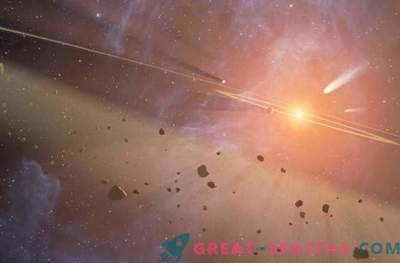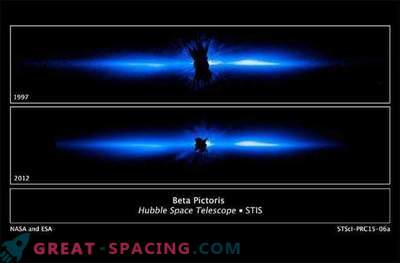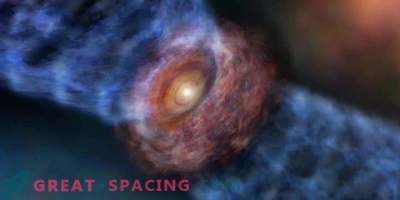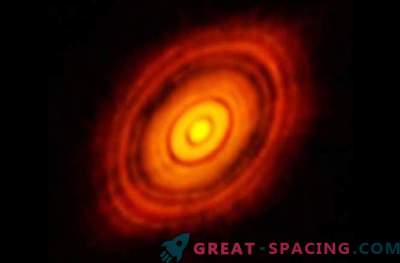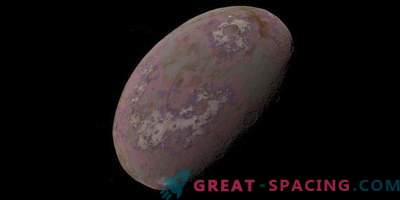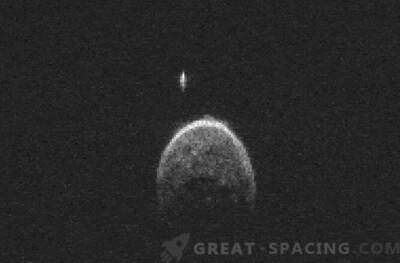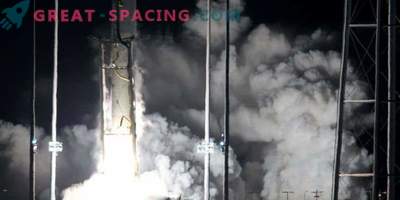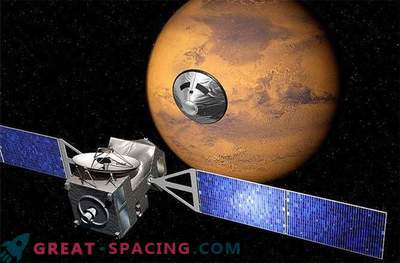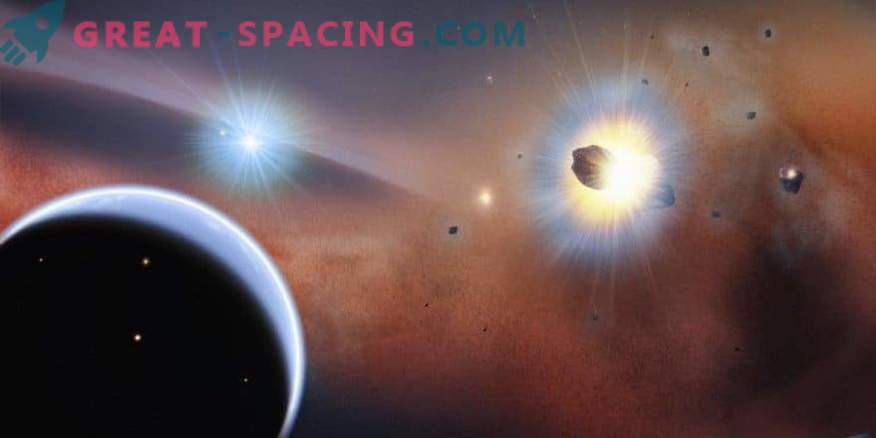
A gigantic carbon monoxide cluster is found around a nearby star, which is a consequence of a collision between comets and the presence of a massive hidden planet, according to the latest observations of the Atacama telescope of a large millimeter and submillimeter Arrey (Alma) in Chile.
Located just over 63 light-years from Earth in the southern constellation Pictor, Beta Pictoris is a young more massive star, which is 9 times brighter than the sun. It is surrounded by a protoplanetary dust disk, which we see from the edge and with at least one discovered planet in orbit - Beta Pictoris b.
Based on the behavior of a huge ring of dust and carbon monoxide (CO) gas surrounding the Beta Pictoris, which is three times farther than Neptune from our Sun, which presumably arose as a result of the collision of small stony planets against each other, or more likely, millions of comets were attracted by the gravity of one massive planet and they are currently on chaotic collision courses.
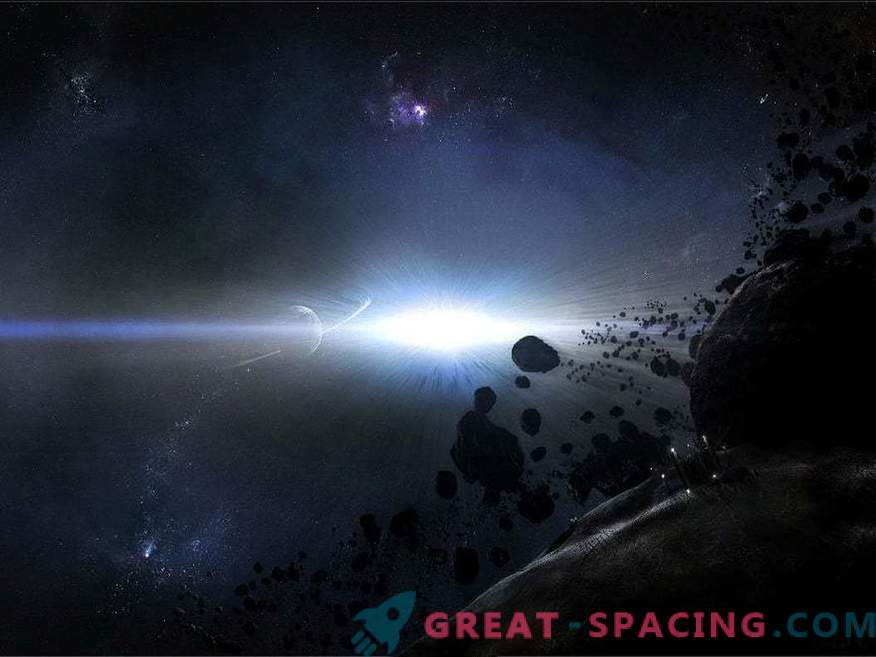
Collisions, as expected, continue and replenish carbon monoxide in the ring, otherwise they would quickly collapse under the action of ultraviolet radiation from the star - approximately for about a century.
“The production of such a quantity of gas, according to our observations, is equivalent to the complete destruction of a large comet every five minutes,” said Aki Rober, astronomer of the Goddard Space Flight Center, NASA and co-author of scientific literature. "In order to get such a number of collisions, there must be a very dense massive swarm of comets." Swarm can attract, yet not open planet, rotating in orbit Beta Pictoris.
"A planet with a mass of about how Saturn can have such an effect," said Rober.
If comet collisions occurred randomly throughout the disk, the gas should be evenly distributed, not having specific dense areas.
Whether there are several gas accumulations around Beta Pictoris, or only one, is still unknown - because we see the whole system from the edge it is difficult to determine. The movement of compacted bright clusters is observed two.
Regardless of the source of the collisions of comets or planets - or a combination of both - astronomers suggest that there are still many planets waiting to be found around Beta Pictoris, according to a news article from the National Radio Astronomy Observatory.
Regardless of the source of the collisions of comets and planets — or a combination of both — astronomers “are optimistic about finding many planets that hope to see around Beta Pictoris,” according to a press article from the National Radio Astronomy Observatory.
